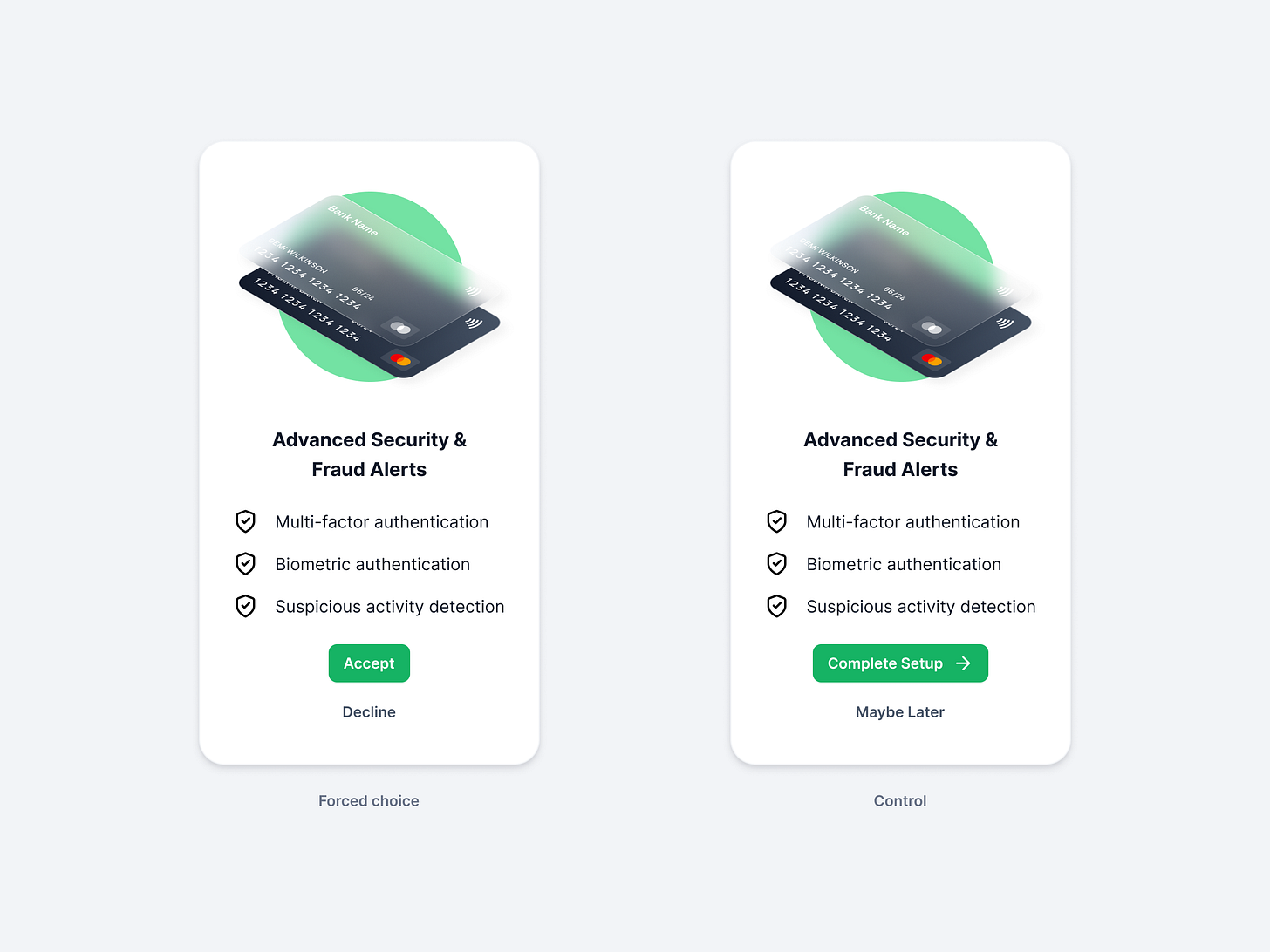How behavioral science can boost your designs
150: People do not always behave logically. We say one thing and then do something else. We even go against our instincts.
Welcome to this week's 🔥 subscriber-only 🔥 edition of Alex's Camp. Each week I explore design’s interplay with product, business, and technology, and answer your questions about freelancing, career, and personal growth.
The study of these behaviors is known as behavioral science. At the convergence of psychology and economics, it investigates the impact of cognitive, emotional, and social factors on decisions and, ultimately, behaviors.
Behavioral science helps product designers understand how people establish habits, how social norms and cues influence them, and how they respond to various forms of feedback.
I'll show you real-world examples of tests that demonstrated significant shifts in conversion rates when the behavioral design was used to drive product design—and why they worked—to help you better your own product.
Proceed with caution, of course. We do not recommend simply dragging and dropping these concepts into your product without first investigating whether or not they work in your situation.
Default Bias
Default bias suggests that people tend to stick with the default option presented to them.
In UX design, this concept is applied by setting desirable options as defaults, such as pre-selecting the most commonly chosen option or highlighting the recommended choice.
By doing so, designers can nudge users towards certain actions.
Control over forced choice
Part of a great user experience is nurturing users’ feeling of control over the user interface (UI) they happen to be using. (Source: Nielsen Norman Group)
Let's say you ask people to “accept” or “decline” the new feature. By asking people if they wanted to decline (which is definitive and final), there's a cost to not accepting it — you might not get a second chance. Suddenly, “accept” looks much better in comparison.
When we allow people to skip something or say “maybe later,” there’s very little cost to them.
You can increase the benefit of saying “yes” by focusing people on a short-term goal: completing setup.
People (you, your users, your customers) all want to complete things. By making people feel closer to completing something, we delivered a bigger immediate benefit.
Loss Aversion
Loss aversion refers to the tendency for people to feel more strongly about potential losses than gains of equal value.
UX designers can leverage this bias by framing messages or interactions in terms of avoiding losses or preventing negative outcomes.
For example, emphasizing what users might miss out on if they don’t take a particular action can motivate them to engage with a feature or complete a task.
Social Influence
Humans are social beings, and their behavior is influenced by the actions and opinions of others.
Incorporating social elements in UX design, such as user reviews, testimonials, social sharing, or social media integration, can tap into social influence and encourage users to engage, trust, and follow the behaviors of others.
Feedback and Reinforcement
Behavioural science emphasises the importance of providing timely and meaningful feedback to reinforce desired behavious.
In UX design, designers can use visual cues, microinteractions, progress indicators, and rewards to provide feedback and reinforce positive user actions.
This encourages users to continue engaging with the interface and motivates them to achieve their goals.
These instances demonstrate the influence of the environment on our decisions. The truth is that people want to add profile pictures and write bios. There is no shortage of intention—only a lack of action.
However, if you asked these customers why they didn't finish the flow, they wouldn't talk about typography, layout, or choice architecture. Behavioral design helps identify and design for these factors.








